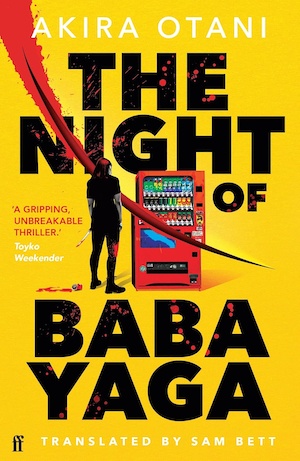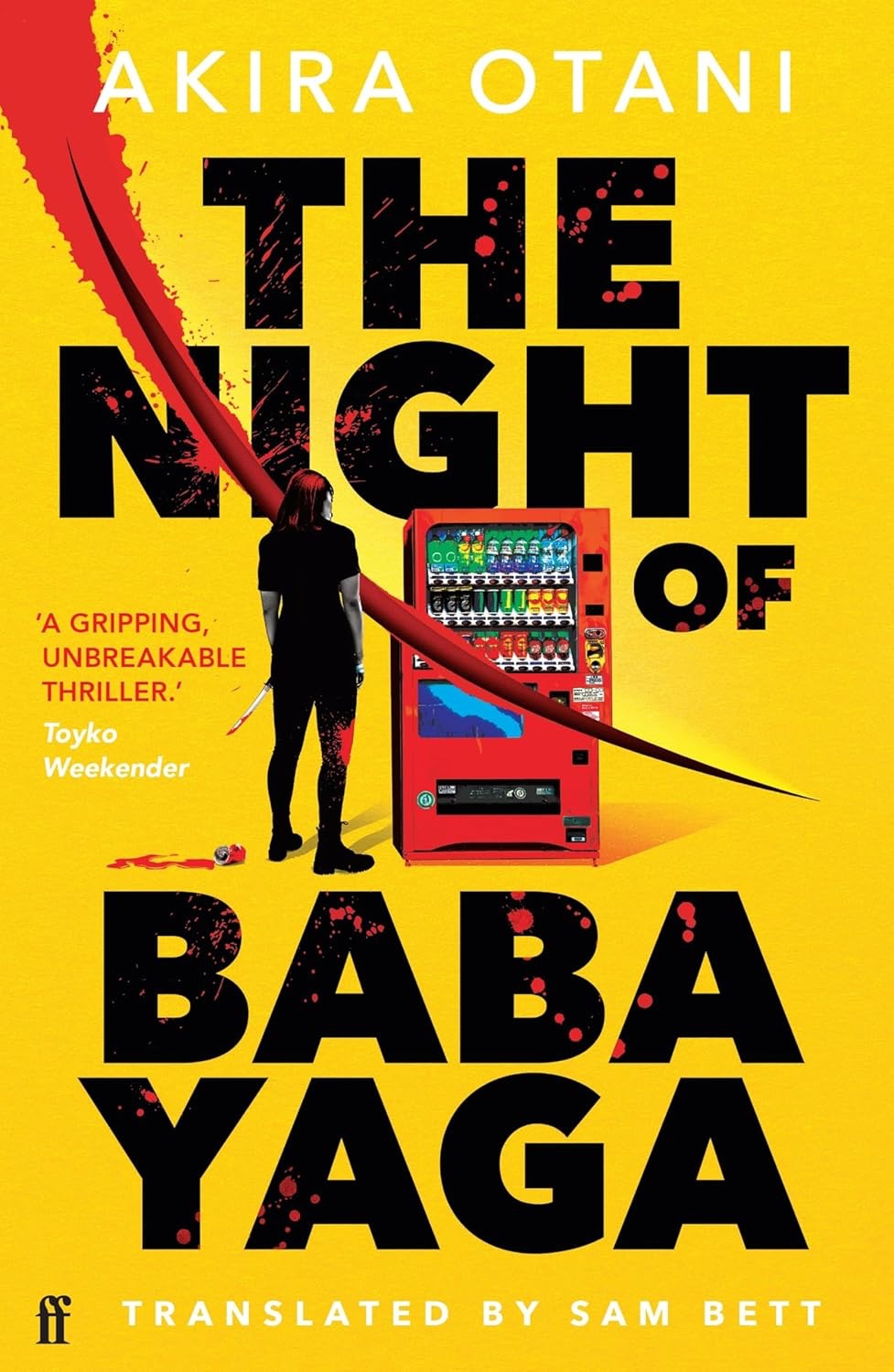
Translated by Sam Bett — Even though strong female protagonists are nothing new in contemporary manga or animé, it’s not often we come across them in Japanese crime fiction novels. Yoriko Shindo is not only a memorable character, she also defies traditional gender roles in a spectacular way – not only through her choice of profession, but also her sexuality.
1979. On the streets of Tokyo a young woman with fiery red hair is harrassed by a group of men. But Yoriko Shindo defends herself, leaving her attackers injured on the pavement. Members from a Yakuza group witness the incident and decide she might be useful to them. They kidnap her and take her to the residence of Genzo Naiki, boss of the Naiki family and largest gang in eastern Japan. Shindo is given a choice: either she becomes a bodyguard for the gangleader’s daughter or they kill the guard dog they have set on her. This ultimatum may sound odd, but Shindo has a backstory involving a dog that explains why she agrees to joining a Yakuza gang.
Genzi Naiki’s 18-year-old daughter, Shoko, is a real Yakuza princess. She has a fickle personality, is spoilt, and expects respect from Shindo despite having none for the latter, whom she views as belonging to a lower social class. Shindo is nevertheless drawn to this young woman who appears to be completely out of place among gangsters, dresses like an elderly lady and eats food meant for a canary.
It soon becomes clear that Shoko only listens to her father. He believes only loose women drink coffee and that watching television will ruin her character, so she doesn’t do either. She attends a multitude of classes to be the best wife she can be to her fiancé, a sadistic and cruel man she will be forced to marry because he’s her father’s blood brother and business associate.
The women gradually become more comfortable with one another through their regular exchanges. Shindo shares with Shoko her early years spent with her grandparents. She tells the tales passed down from her grandmother about Baba Yaga, who lived in a home perched high above the forest floor on chicken legs. Baba Yaga could be both scary and kind depending on how naughty you were. From the stories, Shindo concluded that this was a woman who was free to live her life as she pleased, to hell with society. Coming from Russian folklore, Baba Yaga is an unusual reference.
Her grandfather, on the other hand, taught her every day how to fight and be strong enough to fend for herself. He also had a dog called Three that Shindo was extremely fond of. So, perhaps the use of Baba Yaga is a subtle reference to John Wick, who used that nickname and went on a killing spree to take revenge on the men who killed his dog. Maybe, maybe not.
Shindo also finds out about Shoko’s mother, Yoshiko, who ran off with one of her husband’s most trusted men while Shoko was still in elementary school. Her father has been hunting them down without success. We learn that Yoshiko and Masa have been on the run for the majority of their lives, circumventing her husband’s wrath. However, an incident in the small town where they are hiding puts them in danger once again. Shindo and Genzi Naiki’s right hand man are dispatched to apprehend them.
Female-led revenge thrillers are prominent at the moment and The Night of Baba Yaga is packed with bloodthirsty violence and trigger-happy action. Based solely on the cover, you’d be correct to conclude that the novel also has the feel of a graphic novel and it’s probably no coincidence that Akira Kotani started her career writing for video games. The obvious comparison is to Tarrantino’s Kill Bill, but we also know that Tarrantino’s work is far from original – he borrows heavily from other sources. As a result, comparison should rather be made to the 1973 Japanese film Lady Snowblood, an original female revenge movie.
This certainly isn’t a honkaku mystery in the vein of Seishi Yokomizo or Soji Shimada, but is more similar to works by Masako Togawa, Natsuo Kirino and Ryu Murakami. This is the epitome of the female-led revenge thriller. Yet, it’s more than that. It’s also a rebellion against Japan’s social structure, including the demands placed on people to fit into predetermined gender roles or careers. Even though the novel is populated by men, the driving force behind the story is ultimately Shoko and Shindo’s refusal to conform and instead live their lives on their own terms.
The Night of Baba Yaga has been referred to as queer romance in previous reviews and in its marketing, yet there is little to indicate that the women are in a romantic, sexual relationship. Instead we’re presented with a portrayal of two people who form an unlikely friendship, discover their soul mates and over time become indispensable to each other. This is ultimately where the strength of the novel lies – the tenderness of this relationship in contrast to a world without love and filled with senseless violence.
At a mere 216 pages The Night of Baba Yaga is a short read, but damn, it delivers a mighty punch.
For a different kind of female revenge thriller from Korea, try The Old Woman with the Knife.
Soho Press/Faber & Faber
Print/Kindle/iBook
£14.99
CFL Rating: 5 Stars
